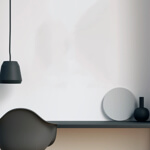Philips Galle (Haarlem 1537 - 1612 Antwerp) after Pieter Bruegel the Elder (Antwerp? ca. 1525 - 1569 Brussels)
This work, like all of Bruegel's prints, is proof of the artist's absolute genius. Full of humour and critical yet understanding of human nature, one could easily look at it for hours. What a pleasure, too, to know that it was printed and handled in "In De Vier Winden", Antwerp's world-famous 16th-century printshop!
There are but few old master painters – especially sixteenth-century ones – whose name and oeuvre is known across the globe. Pieter Bruegel certainly is one of them. It is thus all the more of a surprise that relatively little details about his life are known with certainty: he is scarcely recorded in the archival sources. Bruegel was born sometime between 1525 and 1630. Where remains the subject of debate: over the years, some art historians have suggested the (North Netherlandish) Brabant village of Breugel, whereas others suspected he came from the Southern Netherlands, possibly Brogel or Bree. There is also a case to be made for Bruegel to have been born in Antwerp. It is generally assumed that he was trained there in the 1540’s, in the workshop of Pieter Coucke van Aelst. He became a master of the Antwerp guild of St Luke in 1551.
In 1552 Bruegel left for Italy, where he would remain until 1554. He spent some time in Rome and travelled as far south as Reggio di Calabria. On his return, he probably visited Venice, before coming back to Antwerp. There he worked primarily as a draughtsman and print designer at In de Vier Winden, Hieronymus Cock’s internationally renowned publishing house. It is only later that Bruegel concentrated on painting: his first known painted work is dated 1557. He would devote himself mostly to painting from 1562 onwards, after his marriage to Mayken Coucke and the couple’s subsequent move to Brussels. Bruegel died in 1569, leaving behind a small oeuvre of some 45 paintings and 65 drawings, as well as two sons, Jan Brueghel and Pieter Brueghel the Younger, both of whom would become well-known painters themselves. The rare works of Bruegel were already much in demand in the sixteenth century; today, all but a few of his works are in institutional collections.
It were his prints, however, that allowed for Bruegel’s work to be widely dispersed, known and admired. The present work, Caritas, forms part of a series of seven engravings after designs by Bruegel, depicting the Seven Virtues. The drawing by Bruegel, which is currently kept in the Museum Boijmans van Beuningen (Rotterdam), is dated 1559, as is the engraving. It has been argued, quite convincingly, that the (theological) virtue of Caritas (Charity) was the first in the series of the seven virtues, although, as the other works in the series are not dated, this remains hypothetical. In the middle of the composition stands the allegorical figure of Charity. In her hands, she holds a ‘charitable’ heart, while a pelican sits on her head, picking at its breast. The pelican was considered closely associated with self-sacrifice and even resurrection, as it was believed in medieval times that the bird would feed – or even revive! – its young with its own blood.
Surrounding the figure of Charity are seven genre-like scenes depicting the seven acts of charity: clothing the naked, feeding the hungry, visiting the prisoners and the sick , burying the dead, sheltering the homeless and giving water to the thirsty. Bruegel’s work is always quite ‘layered’: all of his compositions, be it paintings, drawings or prints, are infused with references to and critique of contemporary institutions, beliefs, politics and practices, often not without a hint of satire. In the present work, this can be seen for instance in the figure of the almoner in the front, who is wearing a bonnet and cape as was customary in 16th-century Antwerp. The rosary on his belt points to the fact that he is a religious man, which leads us to wonder whether there is perhaps a personal, spiritual motivation for his charitable work, as he hopes for his own personal salvation through his acts of mercy? The position of the church in the background of the composition seems to reinforce this: does personal involvement matter more than the acts of the institution of the church? Furthermore, there are references to contemporary edicts and rules issued by the authorities regarding charitable work scattered throughout the scene: the fictional village street where these many acts of charity are performed is thus firmly grounded in reality and contemporary practice!
There is an inscription along the bottom of the print, which when translated from Latin roughly reads: ‘Assume that what happens to others shall also happen to you. You will thus only be roused to provide help when you feel empathy for the state of the soul of he who begs for help in his time of need.’ This is a further call to action to the viewer: do not shy away from your personal responsibilities as a (religious) citizen, but actively help others, as it could just as easily be you who is in need. It seems that Bruegel wanted to stress the need for individual acts of charity, removed from the control of state and church, albeit still inspired by the Christian faith, as he implicitly appeals to the fear of the religious of not being judged as a good man on Judgment Day.
The print was published by Hieronymus Cock as of 1559; there is only one state of the plate. The present work has been researched by the Belgian Royal Library for their FINGERPRINT project and has been determined to be a slightly later 16th-century print. As the copper plates for the Seven Virtues remained together until at least the year 1600 in the fund of In de Vier Winden, which was run by Cock’s widow Volcxken Diericx after the latter’s death in 1570, we can be certain that it was printed in that world-famous print shop in Antwerp.
Provenance
Belgian private collection.


